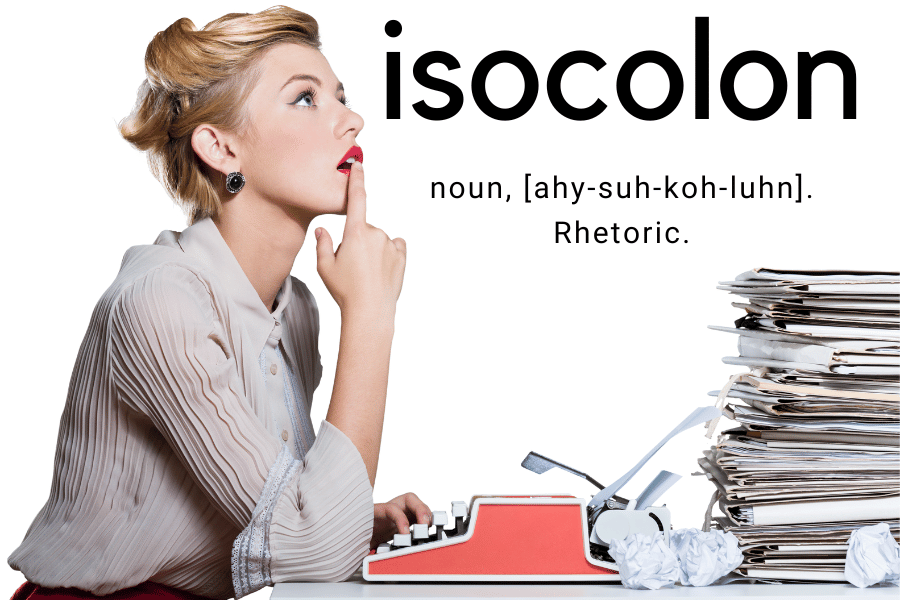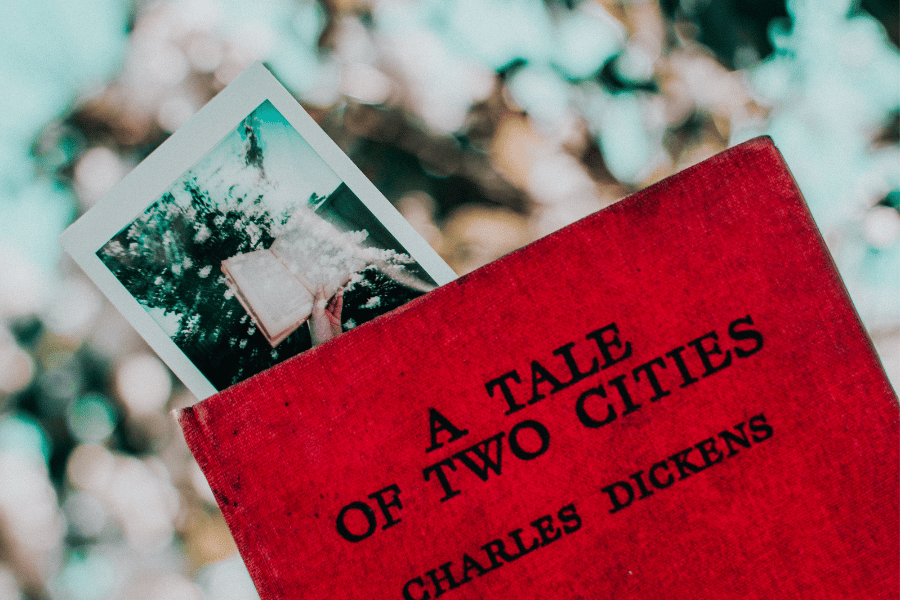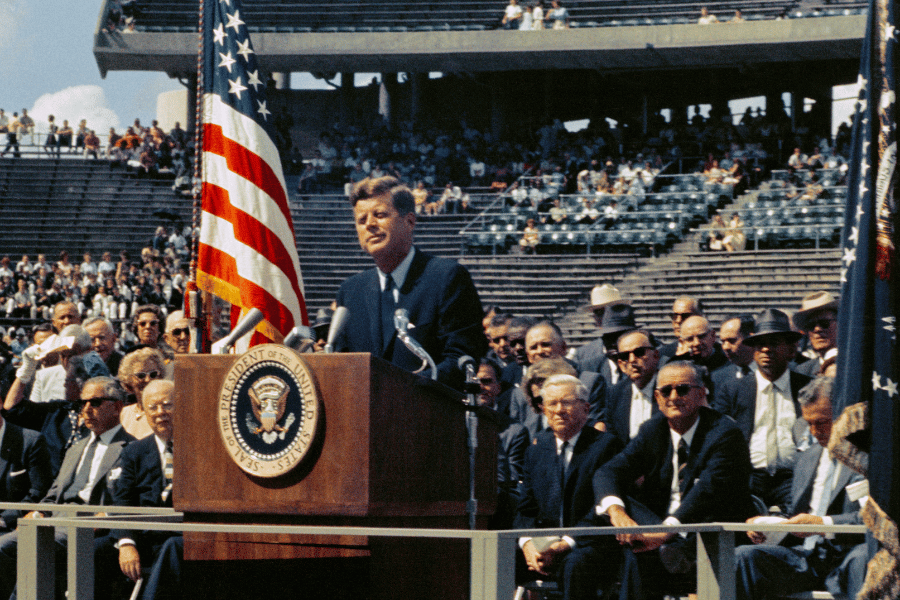Wondering what exactly “isocolon” means and looking for some isocolon examples that’ll make it all clear?
Isocolon is one of those literary techniques that sounds fancy, but that’s easy to get to grips with, spot in action, and even use in your own writing.
Isocolon can be a powerful tool for making your words memorable — and as we’ll see, it’s often used in advertising slogans.

What is the Definition of Isocolon?
Isocolon is a rhetorical or literary device where parallel elements (words, phrases, clauses, or sentences) in a piece of writing or speech are of approximately equal length and have the same structure.
The rhythm of each parallel element, and the grammatical structure, should normally also match.
The word isocolon is pronounced “eye-so-colon” and comes from the Greek ἰσόκωλον (isokolon). “Iso” meaning “equal” and “kolon” meaning “members.”
What are the Types of Isocolon?

There are a number of different types of isocolon — and isocolon examples are often divided into bicolon, tricolon, and tetracolon.
Bicolon means an isocolon with two parallel elements; tricolon has three parallel elements; and a tetracolon has four parts.
Let’s take a look at some examples:
Bicolon
“Have a break … Have a Kit Kat.”
— Kit Kat’s slogan.
“Maybe she’s born with it. Maybe it’s Maybelline.”
— Maybelline’s slogan.
“American by birth. Rebel by choice.”
— Harley Davidson’s slogan.
“Ask not what your country can do for you; ask what you can do for your country.”
— John F. Kennedy
“My job is not to represent Washington to you, but to represent you to Washington.”
— Barack Obama
“The mark of the immature man is that he wants to die nobly for a cause, while the mark of the mature man is that he wants to live humbly for one.”
— J.D. Salinger, quoting Otto Ludwig in The Catcher in the Rye
Bicolon can be used to imply that one part of the statement or phrase follows on inevitably from another .
— as with Kit Kat’s slogan
But bicolon can also be a great way to contrast one idea with another, and perhaps even change the reader’s mind, as seen in the other examples.
Tricolon
“Government of the people, by the people, for the people.”
— Abraham Lincoln, The Gettysburg Address
“Buy it. Sell it. Love it.”
— Ebay slogan
“Life, liberty, and the pursuit of happiness.”
— United States Declaration of Independence
“I think we’ve all arrived at a very special place. Spiritually, ecumenically, grammatically.”
— Jack Sparrow, Pirates of the Caribbean
Using the “rule of three”, the tricolon is a hugely popular rhetorical and literary device.
It can be particularly effective when the third item is longer or more important than the others, as with life, liberty, and the pursuit of happiness.
Tricolon examples often also exhibit asyndeton.
Tetracolon
“Now is the time to make real the promises of democracy. Now is the time to rise from the dark and desolate valley of segregation to the sunlit path of racial justice. Now is the time to lift our nation from the quick sands of racial injustice to the solid rock of brotherhood. Now is the time to make justice a reality for all of God’s children.”
— I Have a Dream, Martin Luther King
“Give me your tired, your poor,
Your huddled masses yearning to breathe free,
The wretched refuse of your teeming shore.”
— The New Colossus, Emma Lazarus
A tetracolon includes four parallel elements. The term tetracolon is also used in poetry for a stanza containing four parallel lines.
Some examples of isocolon go even further, having five, six, or more elements.
What is the Function of the Isocolon?
The key function of the isocolon is to be memorable.
Pairing two equal elements helps us to remember them — and contrasting or subverting the first with the second can encourage the listener or reader to think differently about something.
As a rhetorical device, this makes isocolon especially powerful.
When an isocolon includes three elements, these appeal to our sense of completeness.
Things that come in threes often seem particularly satisfying or funny. Think of all the children’s stories that involve threes, like “The Three Little Pigs” or “Goldilocks and the Three Bears” — or the genies that grant three wishes.
Isocolon Examples in Classic Literature
One of the best-known examples of isocolon is Julius Caesar’s “Veni, Vedi, Vici” — I came, I saw, I conquered. Here are a few well-known examples from classic literature:
The Tyger by William Blake (1794)
“What the hammer, what the chain,
In what furnace was thy brain?
What the anvil? What dread grasp.
Dare its deadly terrors clasp?”
Here, the first two lines are echoed in structure by the last two in a bicolon, adding to the rhythmic appeal of William Blake’s famous poem.
A Tale of Two Cities by Charles Dickens (1859)

It was the best of times, it was the worst of times, it was the age of wisdom, it was the age of foolishness, it was the epoch of belief, it was the epoch of incredulity, it was the season of light, it was the season of darkness, it was the spring of hope, it was the winter of despair, we had everything before us, we had nothing before us, we were all going direct to Heaven, we were all going direct the other way[…]
This series of bicolons, each creating an oxymoron, forms a memorable opening to A Tale of Two Cities.
Richard II by William Shakespeare (1595)
I’ll give my jewels for a set of beads,
My gorgeous palace for a hermitage,
My gay apparel for an almsman’s gown,
My figured goblets for a dish of wood,
My scepter for a palmer’s walking-staff[…]
King Richard — rather despairing and also rather dramatic here — is fairly certain of being deposed by Bolingbroke.
Henry VIII by William Shakespeare (1613)
My lord, we have
Stood here observing him: some strange commotion
Is in his brain: he bites his lip, and starts;
Stops on a sudden, looks upon the ground,
Then lays his finger on his temple, straight
Springs out into fast gait; then stops again,
Strikes his breast hard[…]
The actions of Cardinal Wolsey, especially piled up in successive clauses in this example of isocolon, suggest that something is very much on his mind.
Isocolon Examples in Famous Speeches
Isocolons are memorable and effective — making their use especially popular as a rhetorical device in speeches, particularly political speeches.
JFK’s Inaugural Address (1961)

“Let us never negotiate out of fear. But let us never fear to negotiate.”
“Ask not what your country can do for you — ask what you can do for your country.”
In these two examples, JFK uses isocolon as a fast and effective way to encourage people away from one way of thinking — and toward a better way to think or act instead.
Winston Churchill’s War Time Speech (1940)
“Never in the field of human conflict has so much been owed by so many to so few.”
The words, coming as Churchill observed the Battle of Britain, derives its emotional impact from the contrast of “so many” and “so few”.
Abraham Lincoln’s Gettysburg Address (1863)
“Democracy is a rule of the people, for the people, and by the people.”
We took a brief look at this sentence earlier as an example of tricolon. This line from the Gettysburg Address may well be one that you remember well — you’ve likely heard it quoted a number of times.
Theodore Roosevelt’s “Strength and Decency” Speech (1903)
“There is no good in your preaching to your boys to be brave if you run away. There is no good in your preaching to them to tell the truth if you do not. There is no good in your preaching to them to be unselfish if they see you selfish with your wife, disregardful of others.”
The repetition of “there is no good in your preaching…” sets up this tricolon of sentences.
Isocolon Examples in Pop Culture

Listen carefully next time an ad comes on, or take a look at billboards when you’re on busy city streets, and you’ll be sure to spot some isocolon examples. You might well hear many in everyday conversation, too.
Here are some very common isocolons from pop culture:
- Buy one, get one.
- Signed, sealed, delivered.
- Roses are red, violets are blue.
- Maybe she’s born with it. Maybe it’s Maybelline. (Maybelline)
- Melt in your mouth, not in your hands. (M&Ms)
- It takes a licking, but it keeps on ticking. (Timex)
- Keeps going and going and going. (Energizer)
- Live in your world. Play in ours. (Playstation)
- Share moments. Share life. (Kodak)
- Your vision. Our future. (Olympus)
- Have a break, have a Kit Kat (Kit Kat)
- Snap! Crackle! Pop! (Rice Krispies)
- My goodness, my Guinness. (Guinness)
- Grace, space, pace (Jaguar)
Mastered These Isocolon Examples? Give it a Try Yourself
Now that you’ve got clear about what exactly isocolon is and you’ve seen plenty of examples of it in action, it’s your turn.
Look out for isocolon in the things you listen to and read — from fiction to advertising copy.
And if you’re a writer yourself, give isocolon a try. It’s an effective way to make a memorable point.
The post Isocolon Examples & Definition: The What, Why & How appeared first on Smart Blogger.

No comments:
Post a Comment